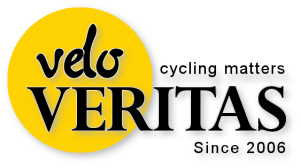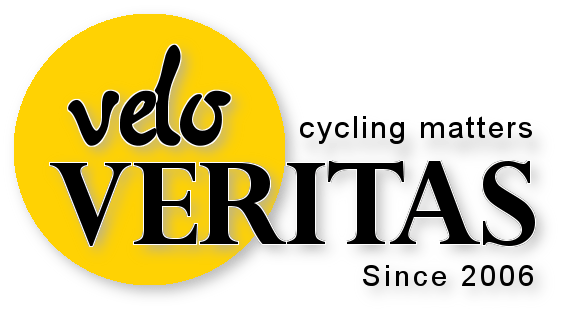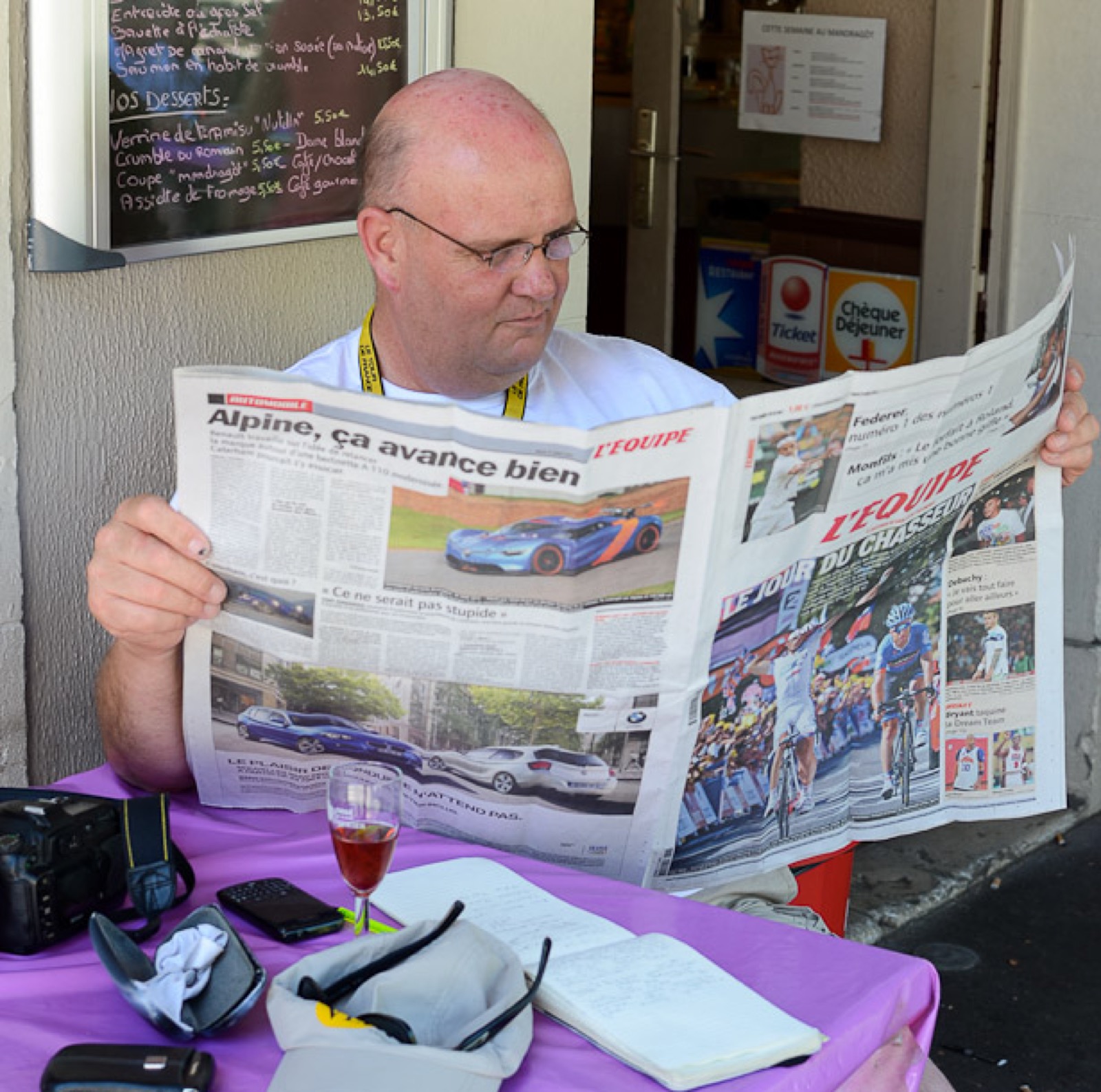John Pierce is one of the world’s great sports photographers, he’s a friend of VeloVeritas and in our site’s best tradition, the man can RANT about the sport he’s been a part of for 50 years.
In Part Two of our interview with John, we looked at the changes the sport and photography equipment have seen through the decades, we bemoaned monotonous mountain stages in grand tours and the allocation of time bonuses for climbers, and agreed that Eddy Merckx was indeed The Boss.
In Part Three, our final chat with John, he looks at what changes he would bring if he were elected President of the UCI (we’d vote for him!), tells us about his favourite and most photogenic riders, ponders what really was in Lance’s bottom bracket, and gives us amateur photographers some tips of the trade.
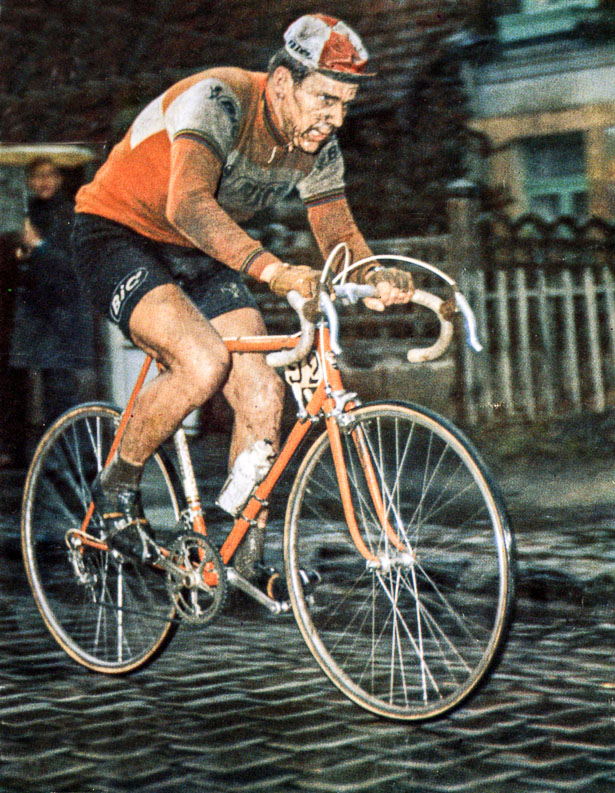
Photo©John Pierce / PhotoSport International UK USA Asia
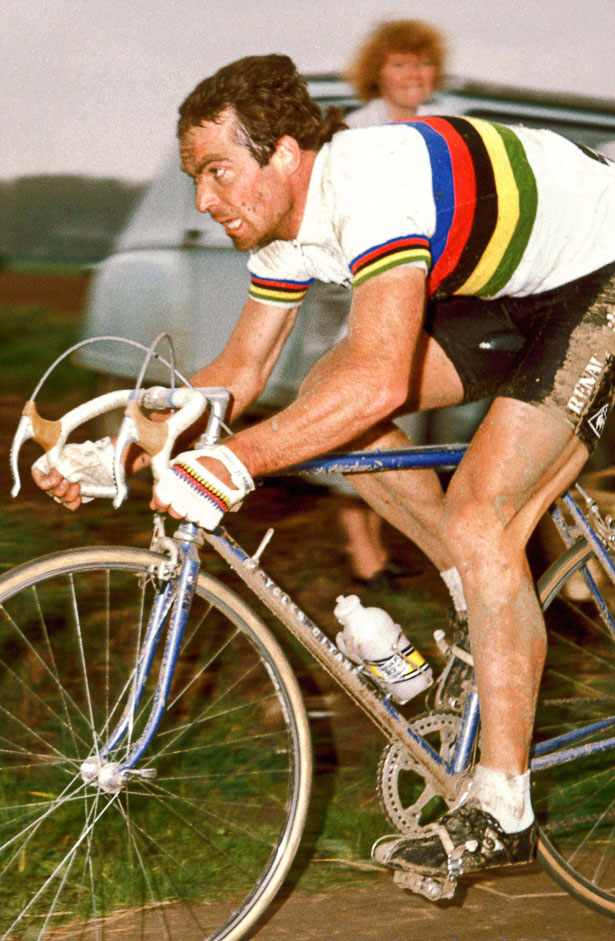
Photo©John Pierce / PhotoSport International UK USA Asia
You mentioned Paris-Roubaix would be at the top of a list of favourite races – why?
“If I was no longer involved with cycling, I would still go but it’s spoiled in recent years because of road closures on the day. People who want to watch it have to go a day or more before, in a motorhome.
“Then having to stay there, they party, they get drunk and that produces a disrespectful crowd whom the riders have to struggle over the pave and race through the deep, often drunk crowds.
“Big football matches in the area enhance the problem the day before Paris-Roubaix, so you can see how the crowd, allowed onto the street can now be a problem. When there was no restriction, and easy access for spectators on the same day as the race, there was never a problem.
“This race Paris-Roubaix has rarely been won by an outsider.
“It is also a magnet for past heroes and a bit of a festival atmosphere. In the 70’s it always used to be cold and wet, even snowing.
“Nowadays it is sunny and dusty; for Roubaix, I prefer wet and cold.”
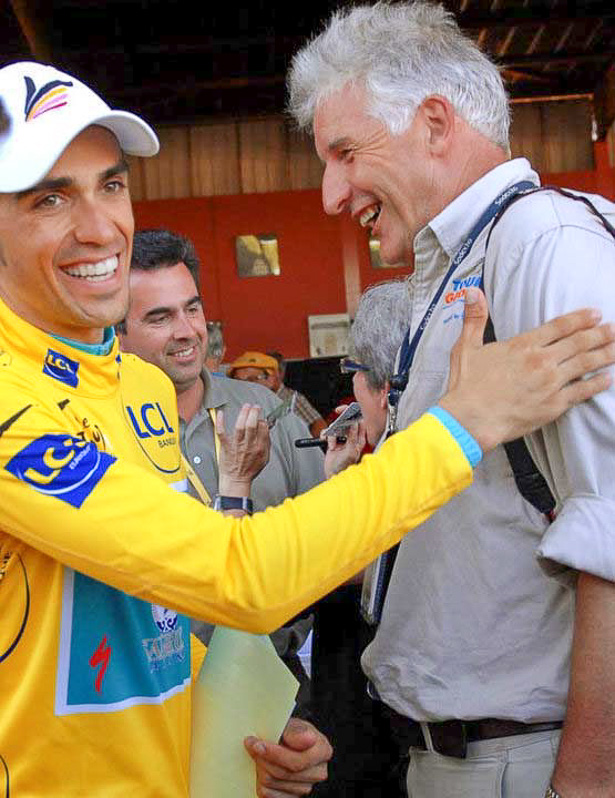
Photo©Peter Goding
Least Favourite?
“Milan-San Remo, it takes too long for what is achieved. They should make a finishing circuit of 12kms, crossing over the Poggio twice, meaning they would also go through the finish twice.
“You could shoot the race, then go to the Poggio climb, then follow the lead group down to the Via Roma for the finish and podium.
“Simples – then it would be worth covering.”
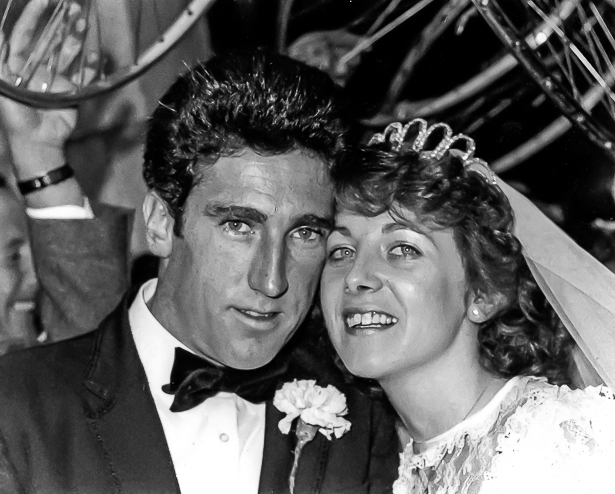
Photo©John Pierce / PhotoSport International UK USA Asia
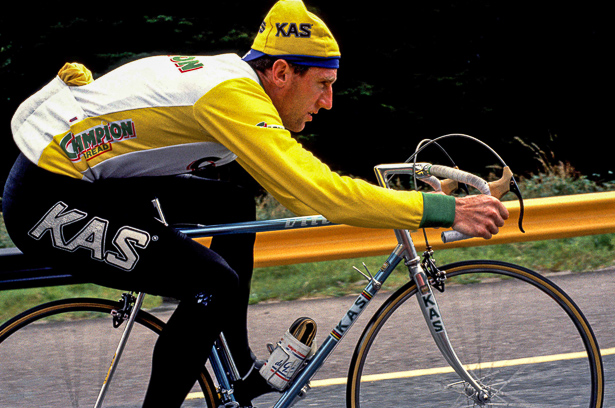
Photo©John Pierce / PhotoSport International UK USA Asia
Your Favourite Riders, and why?
“Merckx, Gimondi, Roger De Vlaeminck, Moser, Kelly and Kupfernagle. All because fame never changed them, they raced because they were ‘hungry’; they were always competitive, always on the attack. Never any excuses and always graceful to those who managed to occasionally beat them. You never ever saw any of those riders sitting on.
“However the greatest rider of all time is Sean Kelly.
“He rode everything, not just selective events. He won lots of classics, some tours and stage races, on UCI points he would be the third or fourth greatest rider ever, yet he never won the Tour or the Worlds.
“He is today the same character and personality as the man he was in 1984, a man of few words – he even nodded a ‘yes’ on the radio.
“It’s not what he won or how he lost, it’s how he conducted himself that makes him a legend. He is highly revered by his fellow professionals and continues to put back into cycling far more than he took out. He is an outstanding example of hard work bearing its fruits.
“He has never had contractual problems, nor have you ever heard of injuries, excuses or bad words about fellow competitors. He is the Pro’s pro.”
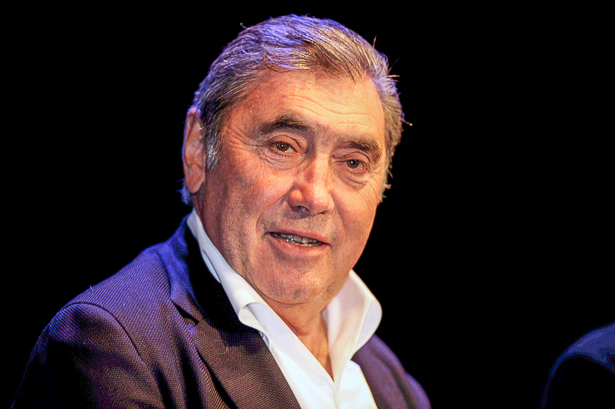
Photo©PhotoSport International UK USA Asia
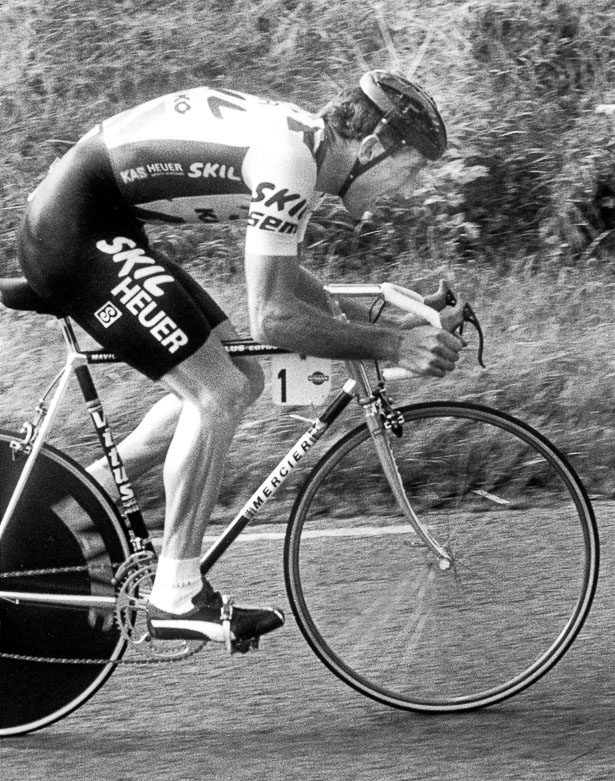
Photo©John Pierce / PhotoSport International UK USA Asia
And Most Photogenic Rider?
“That’s not a fair question; first if riders do not race hard, then the great racing picture is almost impossible.
“You would also need to depict the rider doing what that rider does best, be it climbing, sprinting, or riding a time trial.
“Merckx was good at all of those things, so that is why the question is unfair.
“Hinault was easily very photogenic on and off the bike, but the beauty is in the eye of the beholder, if you are a Hinault fan or not?
“Or a Moser fan – he was always striking on a bike.
“Didrich Thurau was another, Raymond Poulidor was majestic, he had an aura – so popular he could have run for President.
“On the track there was Matt Gilmore, Bruno Risi, and Danny Clarke.
“The girls; Deborah Shumway (USA) and Hanka Kupfernagel (Ger), their style and position on the bike was perfect, better than most men, easily the most photogenic.”
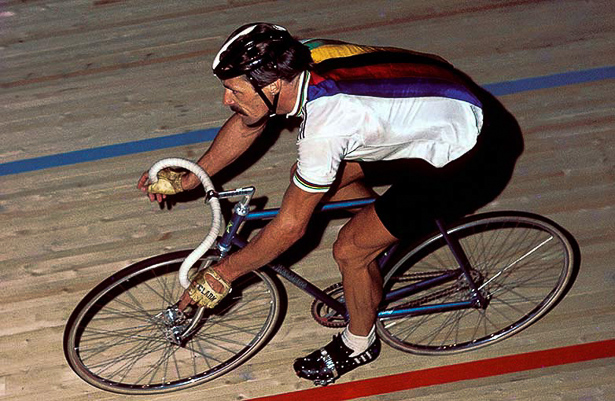
Photo©John Pierce / PhotoSport International UK USA Asia
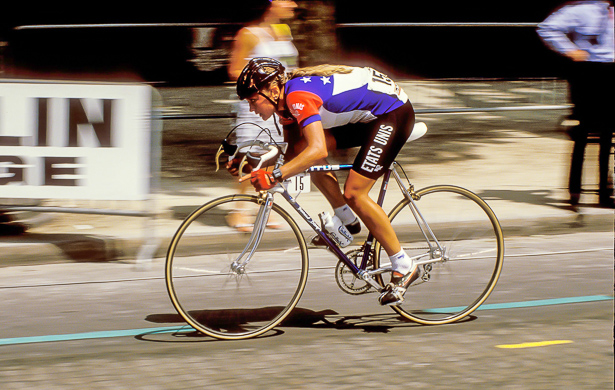
Photo©John Pierce / PhotoSport Intnerational UK USA Asia
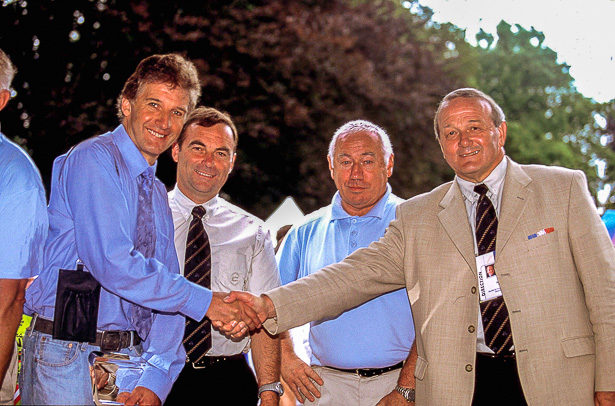
Photo©John Pierce / PhotoSport International UK USA Asia
What’s the biggest mistake amateur photographers make when taking race pictures?
“The obvious mistake is standing too close to the subject and forgetting to pan the camera, then taking the shot too early.
“Try to stand a bit further back but still in a position so you can see the rider approaching. Start to pan the camera, (as if it were a rifle and you were shooting a deer) and wait, wait, and then take as the rider is opposite you.
“Set a high, or fast, shutter speed if the camera is adjustable, link this with the lowest compatible ISO (film speed).
“Then try to squeeze the shutter button rather than punching it with your finger. Punching it will ‘shake’ the camera and all your efforts will be wasted, as the camera will move up and down, when you want it to move at the same speed and direction as the rider.
“And if there is any, keep the sun over your shoulder, but make sure your shadow is not in the photo.”
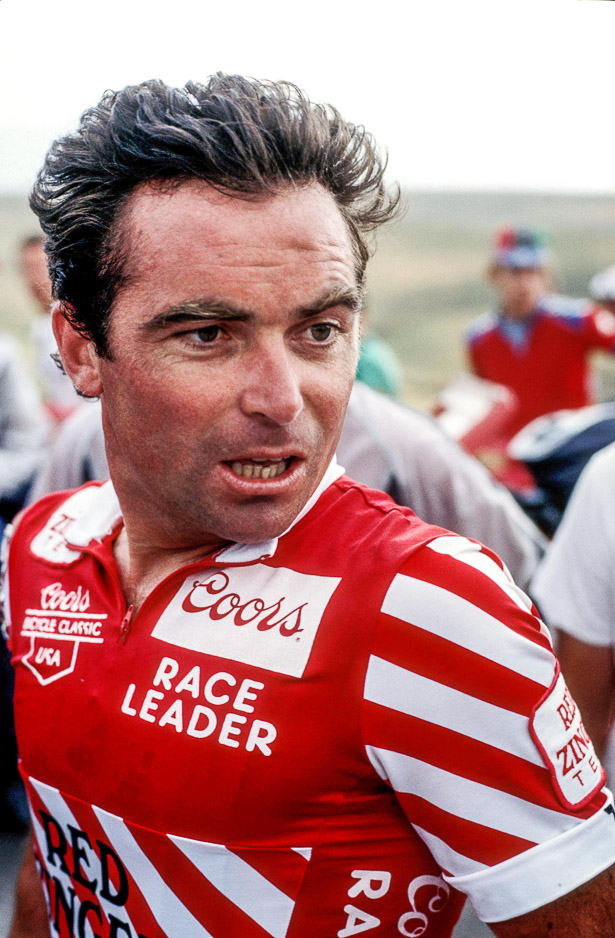
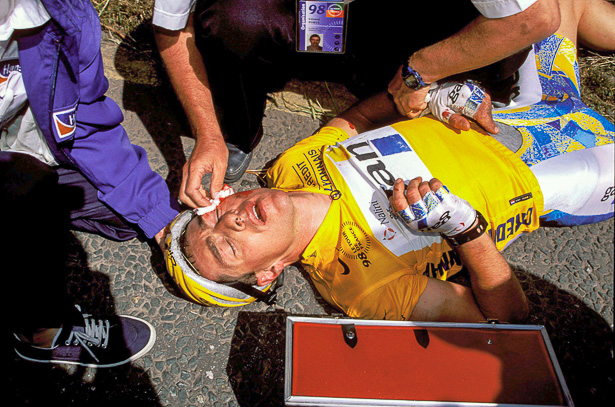
Photo©John Pierce / PhotoSport International UK USA Asia
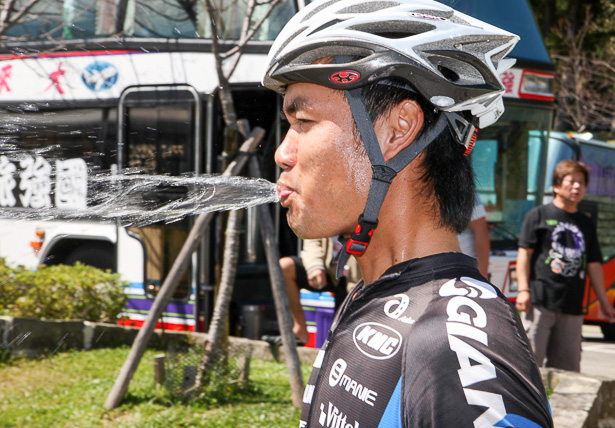
Photo©John Pierce / PhotoSport International UK USA Asia
How about a tip for us amateurs?
“Avoid taking pictures at the Tour de France.
“The view from your camera can be misleading and you may not realise the actual speed or the large number of riders that are hurtling towards you.
“Never, ever, turn your back towards oncoming riders, and do not ever leave bags or backpacks in the road.
“When you stand too close, it’s like an express train passing as if you were on a station platform.
“The problem with taking pictures is you hardly ever see the racing, and if a judge asks a photographer who he thinks won a tight finish, then the photographer never actually got the picture because when they crossed the line the mirror in the camera should have been up, so if he is good at his job he never really sees the finish.”
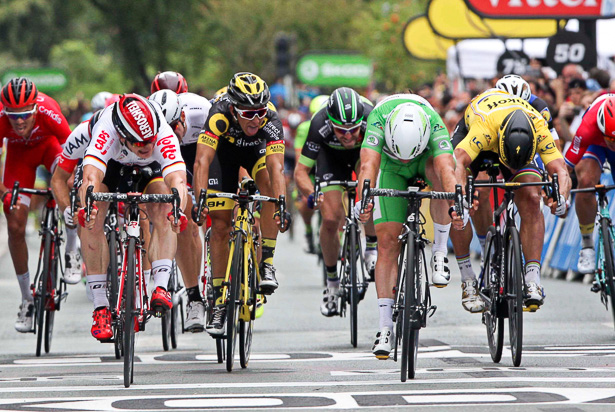
Photo©John Pierce / PhotoSport International UK USA Asia
“There aren’t any barriers separating cyclists from spectators on most mountain passes. This is unusual for a big sporting event and can leave spectators vulnerable to falling into a riders’ path as they ride up the road. It’s important that you ensure you stay clear of the cyclist’s they will be subjected to fines if you push them, both monetary and time penalties.
“Cyclists ride incredibly fast and use every inch of road available, make sure you stand well clear.
“Do not run alongside the riders, there are fast-moving motorcycles too, and spectators are often struck by the TV motorcycles.
“Just watch the race and enjoy it.
“With so many vehicles on the road, including bikes, caravans and cars, trucks and a great many motorcycles, pedestrians should take extra care when crossing. If you’re watching the race with your family, please make sure you keep a close eye on children at all times. The event is all about children and families – let them arrive back home safely.”
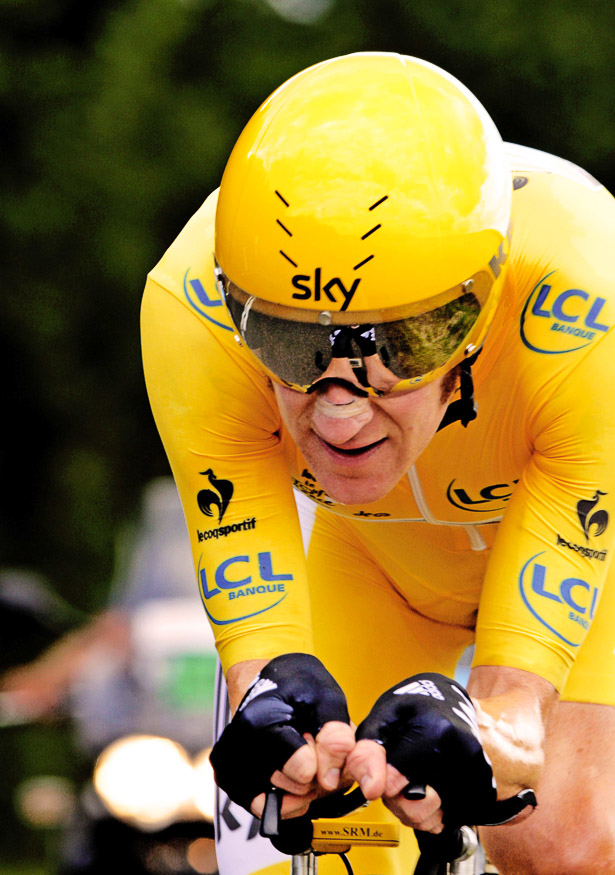
Photo©John Pierce / PhotoSport International UK USA Asia
Mondialisation, races for camels to watch … your take?
“I don’t think the camels are interested, and why would you race a road bike in a sand storm? No one is going to go to Doha-Qatar United Arab Emirates for the World Championships, which is just East of Saudi Arabia, which is between Iraq, Iran – and a sandy place!
“By organising the World Championships there, I believe they are cheating the sports public, the press media and also the many other organisers in Europe that would benefit from such an event.
“Cycling is being controlled by TV money; there are too many events with no live spectators.
“I respect that the organisation is headed by Eddy Merckx and ASO and one can rightly assume a large budget from our Middle Eastern countries that perhaps cannot be matched by other European countries.
“So, only a few people gain, not the sport itself.
“I can’t see a lot of Saudi cyclists wearing a long white robe (Taube) and the headscarf (Keffiyeh) riding in the Classics and Tours of the future.”
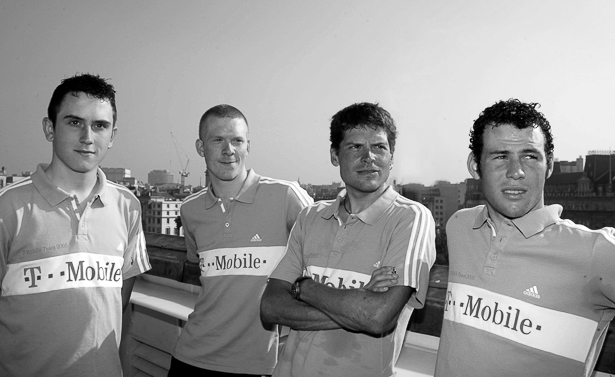
Photo©John Pierce / PhotoSport International UK USA Asia
If You Were In Charge Of The UCI, What Would You Change?
“First I would try to introduce a ranking for Elite Professionals.
“This could also apply to Women’s Elite Professionals although they have a different race entry formula than the men.
“For example; when a rider wins a National or World Championship, a Grand Tour or a recognized traditional Classic, that rider automatically becomes a first Category rider. Those first Cat Elite Pro riders would be obliged to ride the recognized traditional Classics, all of them. There can be exemptions should a rider be sick or in a different country for example. However it should be forbidden for them to race either the day before the day of or the day after a traditional recognized classic, whether out of the country or not. In this way the Classics and their spectators will be re-instated as the best races with the best riders.”
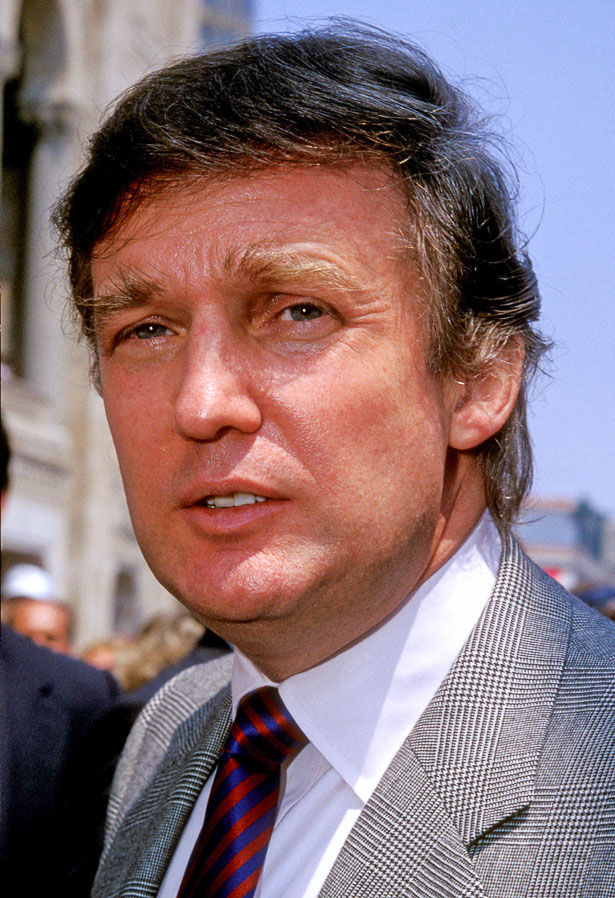
Photo©John Pierce / PhotoSport International UK USA Asia
“I would change the President, and as a personal opinion probably put McQuaid back in.
“I would put a stop to the imbalance between countries federations who allegedly use its money to buy votes.
“I would also put representatives of the Gendarmerie into the UCI HQ so that law enforcement was a natural given.
“All doping cases would be dealt with by Customs who do not need warrants or reasons to make a search. Their power is enough to scare even the Gendarmerie. They are known as ‘DOUANE’ in France, they ride almost plain dark blue BMW motorcycles with a very large DOUANE in white on the side. Of these you should be very aware.
“Once a rider is proven to be positive his doping network also has to be traced.
“The ban or prison sentence would apply to all persons within that group.
“Where possible the penalty will be a competition ban, with no appeal and a life ban from management, even if allowed to race after a ban has been served.
“Multi cases with the same rider or doping personnel would mean a life ban as in the Lance Armstrong case. I think it’s sad that an example is made of Armstrong and no others have been served the same sentence. The Armstrong case itself needs clearing up, no one else has been charged or fined, I believe Bruyneel was banned but the moto deliveryman who must have had accreditation has never been found. The paper trail has never been found and Armstrong still has most of his money.
“Let’s say your bank manager committed fraud, say you lost all of your money. He was discovered but then he lied and sued people, getting even more money by fraud. Eventually he was shown in court to be a liar and a crook, would you then give him his job back, would you not bother to find the stolen money, would you not try to convict his accomplices?
“So how come the UCI allows these people to race again and also take up positions, equal to giving your corrupt bank manager his job back? He wouldn’t get my money again.
“Also, as for Armstrong, I am sitting on around 3,000+ images of him that are pretty much useless. Anyone who rode those seven Tours he won, also had their careers wiped of those results, well not really, but no one talks about those Tours anymore … they don’t count.
“I paid my way for all those events, used my skills to produce images that made him famous, so what about my compensation?”
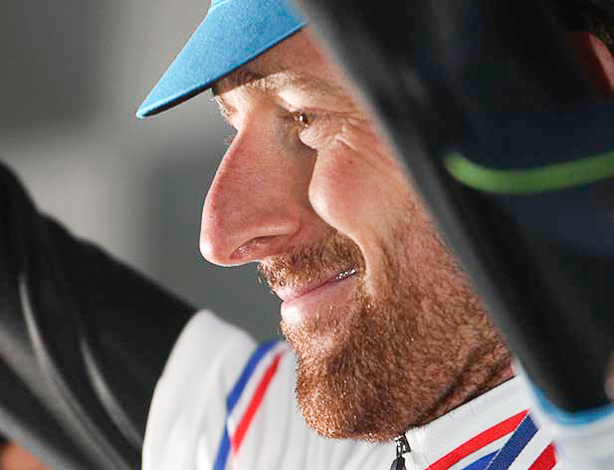
Photo©John Pierce / PhotoSport International UK USA Asia
“In the event of a rider doping to stay with – or stay ahead of – his fellow competitors he is of course cheating, but worse than that, the people he is racing against have had that time stolen from them. They cannot have that time or opportunities again.
“It’s like my pictures, I cannot do it again; if there was a legitimate winner during those years my pictures would be of value. Just like the young riders careers the ‘Armstrong affair’ stole from other people.
“In 2003 I wrote a small piece for David Duffield, the TV commentator; ‘Another amazing ride that beggars belief was that of Armstrong in 2001, when he dropped Ullrich on Huez.
“Just one kilometre after the start of the climb, his acceleration was equal to a Pantani or Virenque ride, both we know to be dopers, everyone knows that such an acceleration cannot last, maybe for 1,000 metres and then the gap you have made is difficult to maintain. However Armstrong continued to accelerate all the way to the top, another 16kms.
“He took two minutes from Ullrich who at the time was one of the best bike racers in the world. What Armstrong did on Huez that year was beyond doping. It makes you wonder is there is an electric motor in the bottom bracket, his bike is always escorted away by Johan Bruyneel after a mountain stage. I have photos of him and his wife with Lance’s bike, that is not his job nor would he want to do it, so why?’
“I wrote this in 2003-04 long before motorised racing bikes are said to have existed, I made jokes about his electric bottom bracket, and even looked and studied pictures, without finding anything.
“Now, 10 years later we have them, so maybe he also had such a mechanism. I managed a team for eight years and when riders punch the pedals the bike does not travel in a smooth forward motion. This is one of the ways you can tell ‘electric assistance’ – the pedalling is too fluid and the travel of the bike too smooth … such was Armstrong’s ease of pedalling and cadence. Just sayin’ – makes you wonder.”
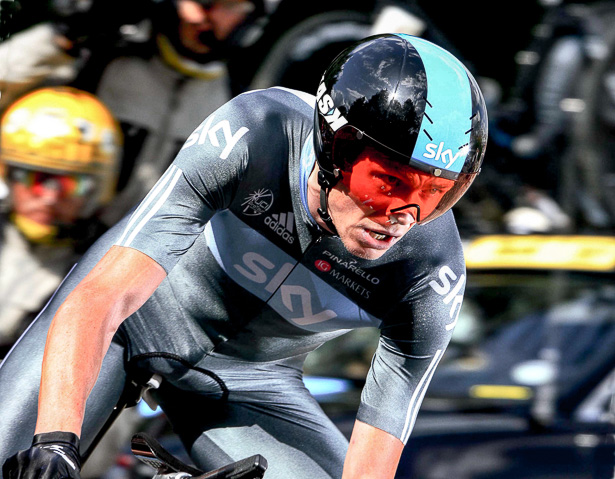
Photo©John Pierce / PhotoSport International UK USA Asia
Would you change anything regarding the teams’ licencing?
“Well, there’s the issue with the new three year World Tour licences and the current conflict between ASO, owners of the Tour de France and the UCI who technically are owners of the licences.
“The 17 Team World Tour will move from a one year licence to a three year licence. This is more secure for sponsors, because World Tour Teams get an automatic entry into the Tour de France, ASO now see that as compromising their races, because a WT team that perhaps failed to perform, under the old system could lose its licence when due for renewal. That is no longer the case.
“This means the second tier pro continental, and quite possibly French teams, will no longer have a chance to move up through the ranks or indeed just receive an invitation to ride the Tour de France. To put this right ASO, owners of the Tour de France chose to register their event on the UCI calendar as a Hors Cat event, instead of a World Tour event.
“This now means that ‘only’ 15 x World Tour teams will gain automatic entry, although it is thought that ASO may invite less, dependent on the standard of the other teams interested.”
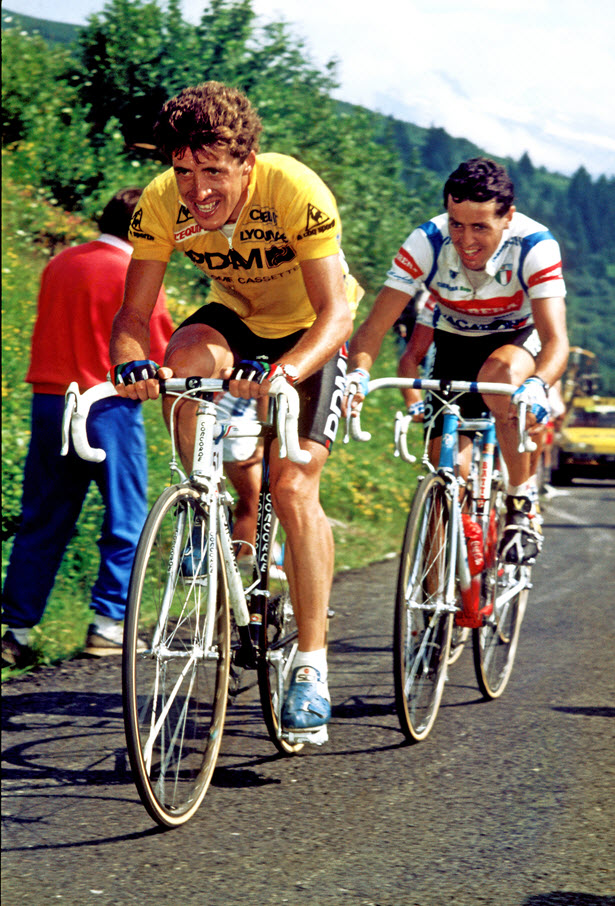
Photo©John Pierce / PhotoSport International UK USA Asia
“There will be 22 x teams in the Tour de France. I think it is correct for the race organisation to have control over which teams are accepted for their races. The principle reason being that they first have to allow for competition in the selection process, second they have to have room for French teams, without which there is no future for French cycling and consequently lack of home interest, which in declining circles Le Tour would suffer..
“An example perhaps, Etixx Quick Step was deliberately not invited to the Tour of Qatar for lack of respect for the protocol arrangements the previous year, arriving late for podiums that were live on TV.
“The UCI is a governing body, acting on behalf of its members; those members are the event organisers around the world and the riders. The only event the UCI own, is the World Championships, and those are independently organised. I believe ASO is correct and the UCI should administer licences in a manner that is conducive to fair competition, be that financial or athletic.
“Speaking of financial, those ethics should also apply to granting the World Road Championships to Doha, (Qatar) – Cycling is not Formula One, we should set out our own table, not follow others.”
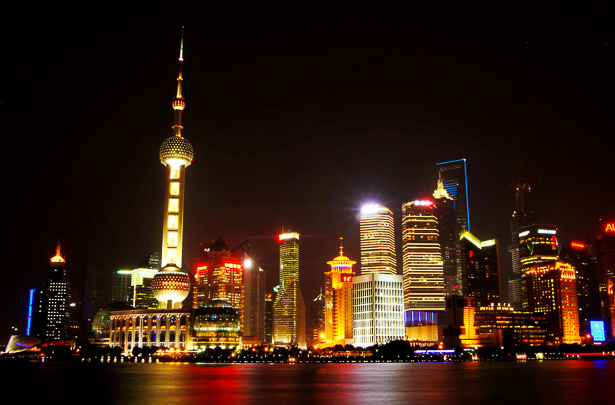
Photo©John Pierce / PhotoSport International UK USA Asia
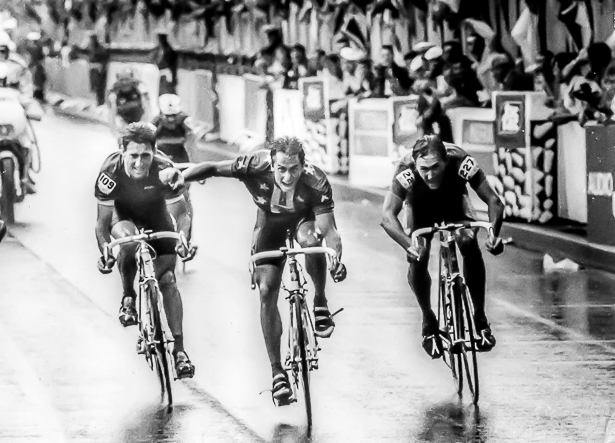
Photo©John Pierce / PhotoSport International UK USA Asia
Last words, John?
“Cycling is a unique sport, it is the only professional sport that allows photographers from the recognised media to travel, not just with the race but actually in the race. There was a time for example when Sean Kelly removed a 70-200mm lens from my photo jacket when I was on a motorcycle alongside him, and rode off with it into the peloton.
“All over the world there are professional races, as far as I know no one pays to watch professional cycling. There is no other sport where you can reach out and touch competitors (please don’t), no other sport where the competitors mingle with spectators before the start and after the finish, cycling is very public and free.
“No other sport has these privileges.
“Prize money does not match that of Tennis, nor do the salaries match that of Footballers. However if you combine annual salary, all expenses and winnings cycling is very much on a par with other sports. (NB. estimated Froome, Sagan, Cavendish, all at £3m p/a ).
“A photographer once wrote on his camera case “Please do not steal my cameras, they are the eyes of other people, without them, they will see nothing.”
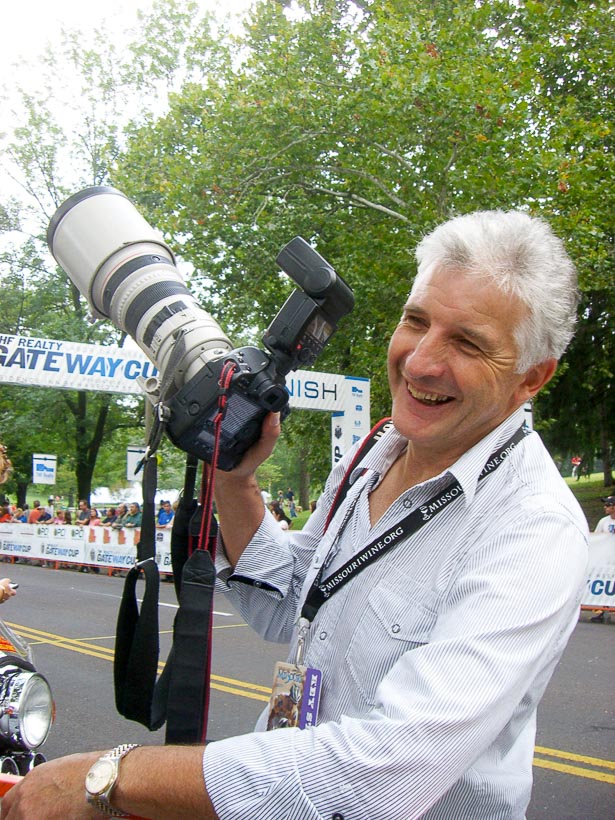
Photo©John Pierce / PhotoSport International UK USA Asia
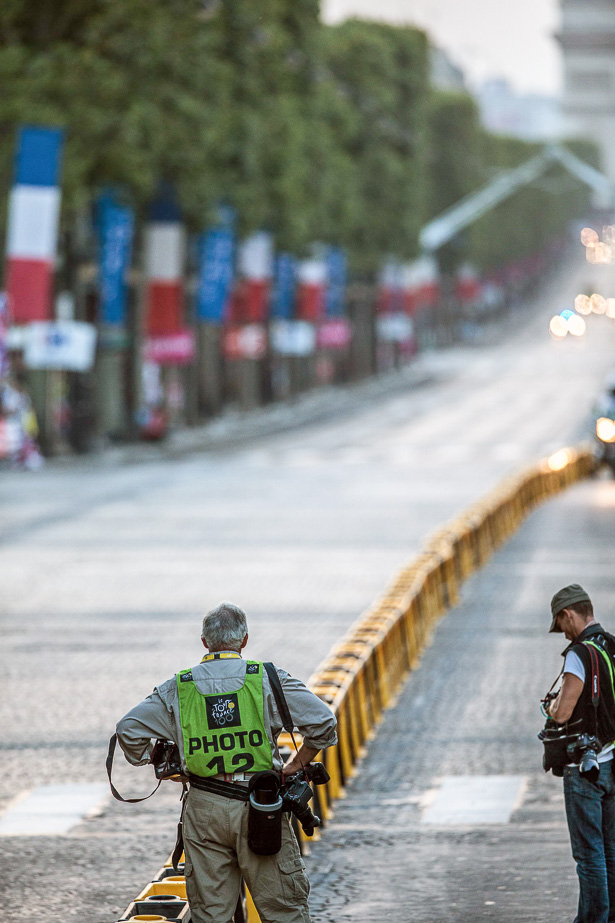
Photo©John Pierce / PhotoSPort International UK USA Asia
